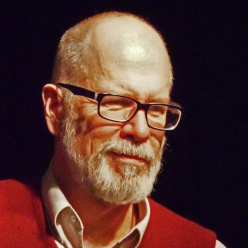Coaching and improv–the parallels and overlapping techniques keep on coming.
Last night, my improv pals and I started rehearsing for this year’s run of Spontaneous Broadway.* In this improvised musical format the actors improvise eight or ten songs in act one, then the audience votes on their favorite song. Act two is a 45 minute improvised musical comedy play that includes a reprise of the winning act one song.
Improvising a play, musical or not, demands a high level of presence and awareness on the part of the improvisers. We have a basic plot formula to help put together a workable structure, but, since the play is improvised in real time in front of the audience, it can get confusing–an actor may not realize at first that she is the protagonist. Or a different actor may think that he is, and then realize that no, he isn’t…adjustments must be made almost constantly. Consider an actor in the wings, who has an incredible idea. He may get excited, he may relish it and focus on it for a few seconds, but then, because of this turning inward, he loses focus on the onstage action. Just for a few seconds. a twist of dialogue renders the great idea useless—if the improviser isn’t listening, holding on to this preconceived idea and embellishing it, he can make a serious boo-boo.
Style is important. If one actor is broad, over the top, and the other is subtle, nuanced—the scene probably won’t work. The actors need to be aware, and adjust to each other—in improv terms, make each other look good.
There’s also the pitfall of “over offering.” An improvised play must begin very simply, because everything–everything! is an offer. In a good piece of theatre, there should be nothing that is extraneous. In fact, playwriting teachers will tell you that the vast majority of scripts by new playwrights are attempts to squeeze two or even three plots into one play. So in the improvised play, we, the writer/actor/directors, must learn to let go of impulses to over offer, and instead focus on receiving what is already there and working with it.
So it is in life, eh? Essentially, we are all writing, directing and acting our own improvised plays. Our scene partners are our families, friends, and co-workers. How often, as we go about our day, do we miss an opportunity to maximize our life by being too focused on our old ideas, instead of being fully present and working with the real interaction in front of us—now?
Knowing, here and now, what scene we are in, and whether we are the protagonist or a supporting player–is crucial to success in real life situations.
Yes, I hear you—“aren’t I always the protagonist?” Well, in the grand story arc of your life, yes. But in a given scene–a little one act play-within-the-play, you may serve your goals better by being a spear carrier. Or you may miss the call to play your finest scene because you didn’t get the cue. It’s all about awareness…
The coaching session can be like a little breakout vignette, a little offstage interview, if you will, where the coach and client can examine the action creatively, and perhaps come up with an adjustment that will make the next act work better. A good coach can help a client recognize the times when the client’s awareness has drifted away from the important action happening now. Or perhaps, to separate a lesser plot structure, and set it aside, so that the really juicy important plot, the client’s success, can be better served. The client/coach relationship is improv, on the stage of life. It’s as creative as anything that happens on stage. And in a good coaching relationship, there is always the potential to produce a hit.
I am offering free sample coaching conversations. If you’d like to explore coaching with me, drop me an email at michaelburns@mopco.org
*Spontaneous Broadway Is a service mark of Kat Koppett and Freestyle Repertory Theatre. Used with permission, all rights reserved.
